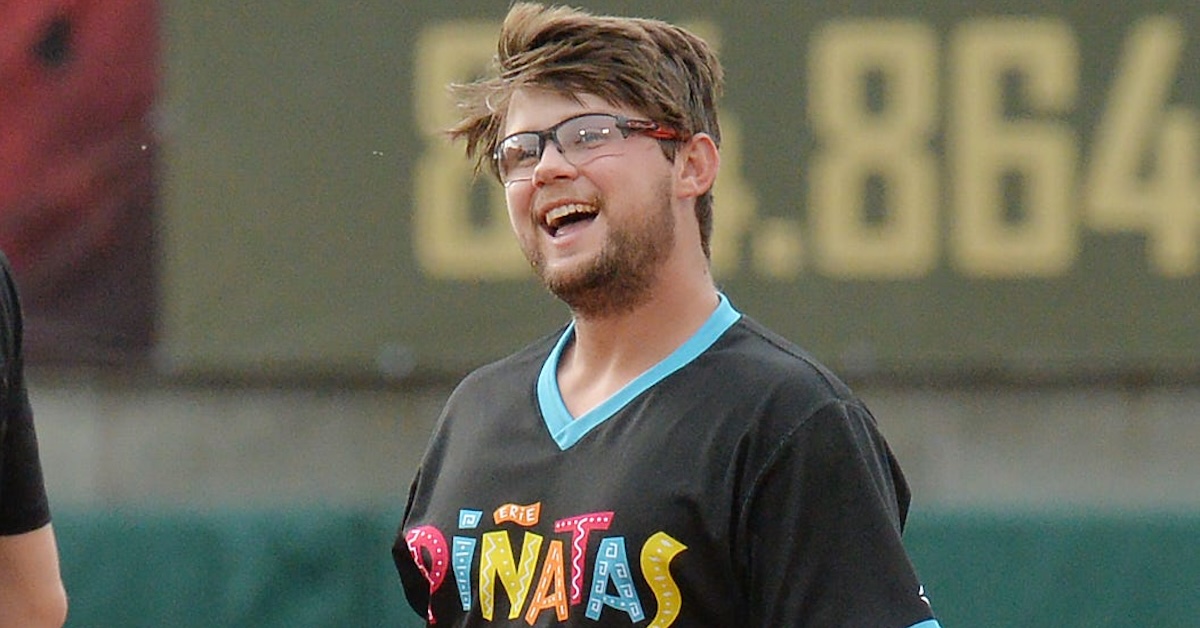Max Anderson Has Been the Arizona Fall Leagues’s Hottest Hitter

Max Anderson is making a name for himself in the desert. The Arizona Fall League’s hottest hitter is slashing a stand-up-and-take-notice .488/.650/.902 over 60 plate appearances with the Scottsdale Scorpions. Hitter-friendly circuit? Absolutely, but Anderson’s numbers are nonetheless impressive. The Detroit Tigers prospect has been scorching baseballs.
His regular-season numbers suggest that his AFL output isn’t wholly surprising. Playing against a higher level of competition, the 23-year-old infielder left the yard 19 times while putting up a 135 wRC+ between Double-A Erie and Triple-A Toledo. A .350/.400/.604 hitter at the University of Nebraska, the erstwhile Cornhusker has gone on to log a 120 wRC+ since being drafted 45th overall by Detroit in 2023.
Less impressive has been the youngster’s 6.7% walk rate as a professional. As Eric Longenhagen and James Fegan wrote back in March, “‘I like to swing, it’s not a secret,’ is both a favorite old José Abreu quote and the operating ethos of Anderson.” In terms of aggressiveness, that hasn’t really changed.
Our lead prospect analyst has seen a lot of him in the AFL, and he provided an updated report on the 40+ FV prospect earlier this week.
“Anderson is still a little chase-prone for my liking, but it might be the lone blemish on the face of his hitting skill set,” Longenhagen told me. “He’s much more on time to do pull-side damage than he was a year ago. He has a much more balanced-looking spray chart now than he did coming out of 2024 [and is] better at pulling hanging breakers. It’s made him a more dangerous hitter overall, despite his tendency to swing at everything.”
Anderson’s approach was the first subject I broached when talking to him in Arizona a few weeks ago. I was especially interested in what the organization’s hitting coaches and coordinators have been stressing to him.
“They’re mostly telling me to keep doing what I’m doing,” said Anderson, whose 6.5% walk rate between Erie and Toledo was accompanied by a 15.8% strikeout rate and a .296/.350/.478 slash line. “In a perfect world I would walk more, but you also don’t want to risk ruining the approach that got you to this point in your career. So, it’s kind of sticking to what I’ve done, yet at the same time improving what I can. If something is working, don’t change too much.”
According to Anderson, the Tigers aren’t heavy-handed when it comes to hitting instruction; Kevin McGonigle shared similar thoughts in a recent Talks Hitting interview. Moreover, the organization doesn’t espouse a one-size-fits-all approach.
“They’re great about taking different cases to different guys,” he explained. “They know they have a bunch of different hitters, and that’s one of the things that makes their development process so good. Rather than trying to mold one certain type of hitter, they work with everybody to try to make them the best hitter they can be.”
Anderson is well aware that improved plate discipline would be in his best interest. He tacitly admitted as much when I asked him what type of questions he typically approaches his hitting coaches and coordinators with.
“Just kind of what they see when I’m at the plate, and things that can make me better,” said Anderson. “Maybe that’s having a better two-strike chase rate, or getting a few more walks on three-ball counts. How do I tame down being aggressive without making myself too passive? How do I balance those? Again, I believe in sticking to what makes you good — not getting outside out that — but at the same time, improving where you can.”
Asked about his relatively humble numbers (which included a 106 wRC+ and a 6.4% walk rate) with West Michigan in 2024, Anderson admitted to having been a little too aggressive at times, trying to force the issue. Recognizing that Detroit’s High-A affiliate plays its home games in a pitcher-friendly park, he came around to understanding that “in the grand scheme, sticking with the process is what is going to work for you.”
As for the success he had this season against a higher level of competition, Anderson said he was basically trusting in his ability and striving to be the hitter he’s always been. He also said he felt relaxed and comfortable playing with teammates who are also friends, focusing more on winning than on individual accomplishments.
Which brings us to his defensive game, which is currently a bigger question mark for Anderson than his tendency to be overaggressive in the batter’s box. The Kansas City native played both second base and third base at Nebraska, and he’s done the same in pro ball. He’s been stationed exclusively at the hot corner in Arizona, where Longenhagen’s looks have him pondering the likelihood that the 6-foot, 210-pound right-handed hitter will ultimately end up being a left fielder.
Wherever he ends up position-wise, Anderson’s bat promises to carry him to the big leagues, and that could happen as soon as the forthcoming season.
“There is enough feel for hit and power — Anderson is incredibly strong for his size — to feel good about him hitting enough to play an integral role [for the Tigers],” Longenhagen opined. “He is on pace to compete for playing time in Detroit late in 2026 and into 2027.”
David Laurila grew up in Michigan's Upper Peninsula and now writes about baseball from his home in Cambridge, Mass. He authored the Prospectus Q&A series at Baseball Prospectus from December 2006-May 2011 before being claimed off waivers by FanGraphs. He can be followed on Twitter @DavidLaurilaQA.